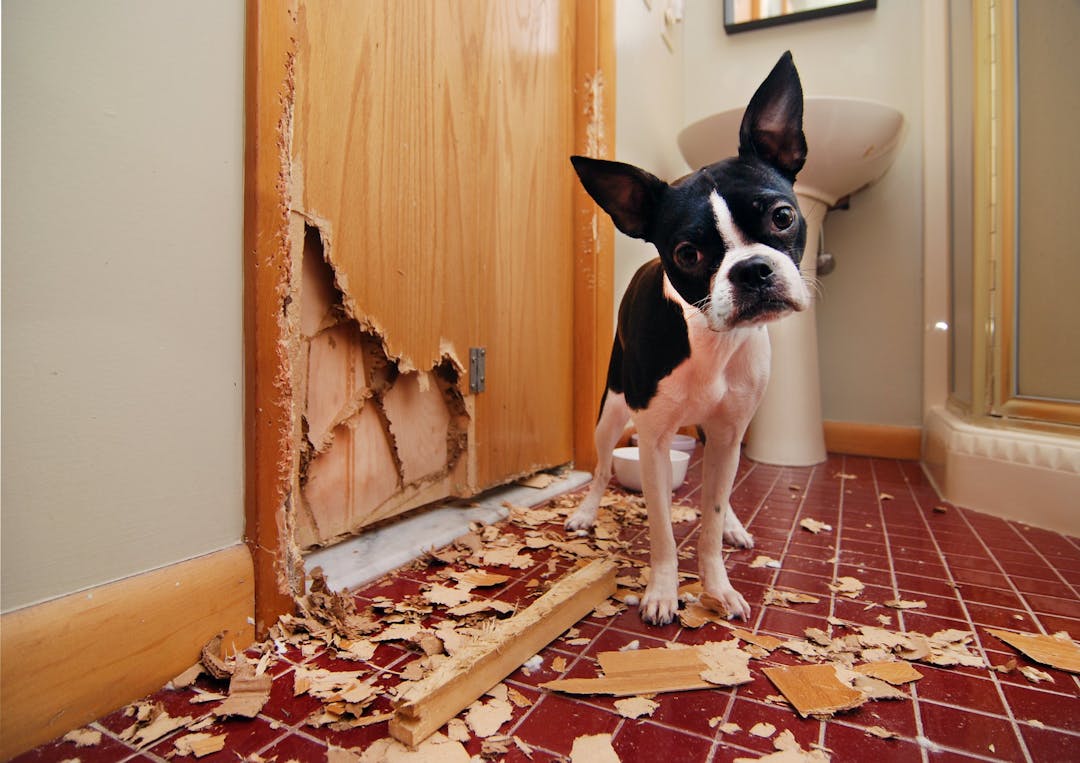Making a packing list isn’t the only thing you have to check off before you travel. If you’re a dog owner, you may be wondering what to do with your pup while you’re away for extended periods of time. Or perhaps, how to bring them with you in a way that doesn’t make you want to pull your hair out. Breathe. Relax your shoulders. Separation anxiety is common, and you will both get through this.
What is separation anxiety in dogs?
When your dog is upset that they are separated from you, that’s what we call separation anxiety.
Have you ever arrived home after leaving for a long time and your house is destroyed? Or has your dog ever started whining after they see you pick up your keys? Well, it’s most likely separation anxiety. Some symptoms of separation anxiety in your dog’s behavior could be barking, urinating or defecating, destruction, escaping and pacing.
Handling separation anxiety in your dog before you travel
Are they coming with you on your travels? Are you dropping them at a trusted friend’s house or boarding? There are different ways to handle both scenarios.
Preparation if they are coming with you
Traveling by plane? We know that can be stressful. Our best advice is to buy the right travel crate and get them used to the crate they’re going to be in BEFORE the real deal. You want your doggo to see their crate as a safe space for them so that when they’re in the air, they are comfortable with their temporary home.
Traveling by car? There is less physical separation if you’re taking a car to your destination. Making sure you have a dog-safe seatbelt is key, and it’s also important to prepare for motion sickness before you start your road trip. If your dog is yawning, licking its lips, whining, or excessively drooling – you may be in for some car sickness.
If your dog is just fastened by their seatbelt, it’s a good rule of thumb to try your best to keep them facing forward, with the windows cracked a little bit. If they’re facing towards the side windows, it can easily make your pup’s body confused, and the cracked window helps circulate the airflow. Clean air? Doggy heaven. Best case scenario: they’re snuggled in their crate, and they like their crate.
Preparation if you will be traveling without them
Sometimes it’s just not a dog trip, and we get that. Are you worried about leaving them? Is this your first time traveling without them for a long amount of time?
Think about options besides kennels/boarding. While boarding your dog is a great last resort, having your dog stay with a trusted family member or friend is always going to make your dog feel less anxious. There are not 10+ other dogs, the attention is most likely all on them, it’s kind of like their little vacation in a way.
If you can’t find a friend or family member to take care of them, the next best thing would be to find a dog sitter. Dog sitters are a great second option because they have the added experience of being a “dog sitter.” They know what they’re doing and will give your doggo all the love they can give them.
Give them distractions. You know, their favorite toys or any sort of comfort item that may signal to them that everything is normal, and everything is going to be okay. It’s true, your dog probably has a favorite toy that they pick up when they’re nervous or excited. This is a psychological way of protecting themselves or allowing themselves to feel comfortable.
A great way to teach your dog to feel more comfortable when you leave home is to try leaving the room your dog is in for 10 minutes a day and gradually increase to 30 minutes to an hour. For anxious dogs, it’s good for them to become comfortable going from room to room without you. When you’re about to leave, spend some quality time before you go, add some belly rubs, and give them their comfort toy – this can work wonders.
The biggest way you can help is by training your dog before you leave. Whether it’s by keeping up with their crate training or practicing shorter rides by slowly increasing the time – setting yourself up for success in overcoming your dog’s anxiety will go a long way.
Seeing your pet experience separation anxiety can be heartbreaking, but luckily with training, the right tools, or medication – it’s likely your dog will get over the hump.
Airvet is always here to talk things through with you to see what your best option could be, and to give you the best information on how to handle separation anxiety moving forward. Don’t give up, you got this!





